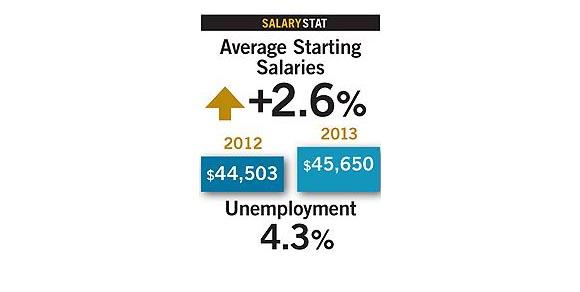
As part of our periodic look at Library Journal’s Placements & Salaries Survey, we found good news rolling out overall for 2013 graduates. The 2014 survey (http://lj.libraryjournal.com/2014/10/placements-and-salaries/2014-survey/renaissance-librarians) looked at just over 2,000 of last year’s LIS graduates in order to assess changes in job description, salary, and geographic distribution across the profession. The general trend appears to be for positive growth – average starting salaries are up 2.6% across the board compared to 2013, and average starting salaries have risen above $45,000. The graduates also reported a slightly shorter job search, at an average of 4.2 months.
One component driving this improvement was an expansion of responsibilities across the digital sector of the field. Librarians are increasingly taking on responsibilities such as managing social media, digital asset/content, and digital projects. Out of all of the positions reported, those whose applicants garnered the highest starting salaries were data analytics, emerging technologies, knowledge management, and user experience/user interface design, all positions that offered an average starting salary over $55,000. Graduates entering into user experience/ user interface design positions started with salaries a staggering 53% higher than the average LIS graduate, at $70,026.
But here is the catch. Many of these digital positions still only account for a small portion of the total positions being filled by new graduates. For example, digital content management jobs were only a fraction (3%) of the total placements, and while they had a significant concentration in Western states and salaries were slightly higher than average, the overall starting salary for this position actually decreased somewhat from 2013 (by 5%). So what does all of this mean? Positions with substantial digital components are becoming more common, especially in private industry, archives, and public libraries, but this growth is not necessarily consistent across library type and geographical area. In the coming years, we will certainly have to keep an eye on this trend towards the digital LIS professional, as well as how positions and wages compare to those across the field.
Want to see how your library position or region is faring? You can access the full data from the survey here: http://lj.libraryjournal.com/2014/10/placements-and-salaries/2014-survey/explore-all-the-data-2014.
Note: This post is part of our series, “The Weekly Number.” In this series, we highlight statistics that help tell the story of the 21st-century library.